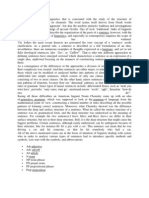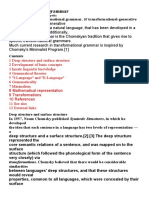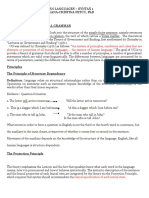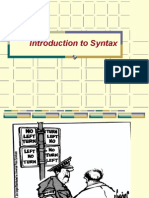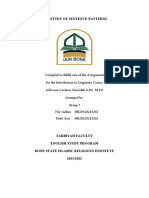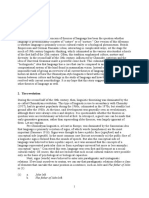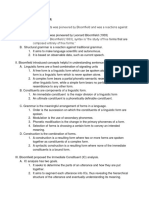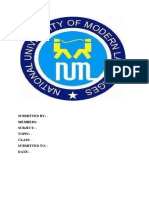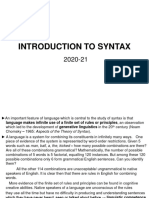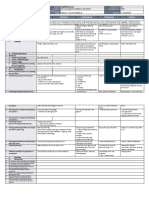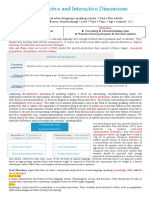0% found this document useful (0 votes)
28 views18 pagesAn Introduction To Linguistic Analysis
The document provides a comprehensive introduction to linguistic analysis, covering syntax, semantics, and pragmatics. It discusses key concepts such as sentence structure, truth-conditional semantics, and speech acts, while also exploring the importance of politeness strategies and cross-cultural communication. Each chapter delves into specific theories and frameworks that shape our understanding of language and its use in various contexts.
Uploaded by
frvxv6t8kkCopyright
© © All Rights Reserved
We take content rights seriously. If you suspect this is your content, claim it here.
Available Formats
Download as DOCX, PDF, TXT or read online on Scribd
0% found this document useful (0 votes)
28 views18 pagesAn Introduction To Linguistic Analysis
The document provides a comprehensive introduction to linguistic analysis, covering syntax, semantics, and pragmatics. It discusses key concepts such as sentence structure, truth-conditional semantics, and speech acts, while also exploring the importance of politeness strategies and cross-cultural communication. Each chapter delves into specific theories and frameworks that shape our understanding of language and its use in various contexts.
Uploaded by
frvxv6t8kkCopyright
© © All Rights Reserved
We take content rights seriously. If you suspect this is your content, claim it here.
Available Formats
Download as DOCX, PDF, TXT or read online on Scribd
/ 18



